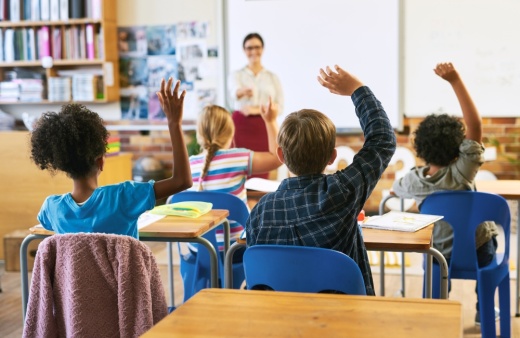At the June 23 board meeting, Stephens reported enrollment numbers for both the gifted and talented as well as special education programs have increased since the 2022-23 school year. However, the district saw a decrease in emergent bilingual students in line with a larger statewide decline, according to the Texas Education Agency.
With major shifts already underway for the 2024-25 school year, Chief Academic Officer Adam Stephens said at the June 23 board meeting that the district is preparing to enter the new school year with strides in special populations programming.
Zooming in
In April, Stephens said officials have completed all outstanding special education evaluations, including referrals and initial assessments from both the 2023-24 and 2024-25 school years.
With 227 new evaluations already anticipated for the fall, FBISD administrators have a proactive plan in place to address requests promptly and avoid future backlogs, while addressing concerns with the software prior to the beginning of the 2025-26 school year, he said.
"The team really did two years of work in one school year,” Stephens said. "Now we’re not starting the next school year playing catch-up, and just in this never-ending hamster wheel."
The district is also launching a Partner PE pilot at Sartartia Middle School for the 2025-26 school year, which pairs special education students with general education peers in physical education classes, Stephens said. The initiative already has over 80 general education student volunteers and is expected to scale to junior highs and high schools districtwide by the 2026-27 school year.
What else?
Stephens said Black and Hispanic student representation continues to lag for the gifted and talented, or GT, program, behind the demographic’s overall enrollment in FBISD, reflecting a broader trend seen at both the state and national levels.
To expand access to the GT program during the 2024-25 school year, Stephens said FBISD administrators have launched the Vistas Program at Title I schools, where at least 40% of the enrollment is low-income. Stephens said the program has provided students more experiential learning opportunities to help students test into the GT program later in life.
"One of the things that we continue to challenge ... is just ensuring that our GT numbers are more representative of the population that we serve,” he said.
Also of note
Stephens said that for the 2022-23 school year, eight campuses didn’t earn any points for the state’s accountability system score for students' achievement for emergent bilingual, or EB learning. However, he said that with focused support, those same campuses improved— earning three or four points out of the 10 total points, according to the TEA.
Previous to the 2024-25 school year, Stephens said the district had an “early-exit” bilingual model, which focused on quickly transitioning students to English-only instruction.
However, during the 2024-25 school year, Stephens said the district switched to a "one-way dual language" model, where students continue to learn in both their native language and English through fifth grade. He said this model supports bilingualism and biliteracy over a longer period, helping students develop stronger skills in both languages rather than phasing out their home language early.
Since then, Stephens said measurement of academic progress, or MAP, end of the year scores have demonstrated improvement, including: :
EB students in first, third and fourth grades outperformed peers in growth on MAP assessments
Third grade EB students taking the Spanish version of MAP outperformed English-speaking peers, which Stephens said validates the effectiveness of dual language instruction.
Zooming out
Compared to its statewide and local districts, the number of students in the EB program at FBISD decreased from the 2023-24 school year, reflecting a statewide trend, although the district has a lower percentage of EB students at 20% compared to the 24% statewide enrollment.
Meanwhile, FBISD, along with Katy and Cy-Fair ISDs were among the highest increases of special education students in the Greater Houston area.
Moving forward
Stephens said parents and guardians are encouraged to stay informed and take part in parent advisory committees like the Gifted and Talented Parent Advisory Committee, or GTPAC, and Emergent Bilingual Parent Advisory Committee, or EBPAC, which will be meeting throughout the 2025-26 school year.
District administrators are conducting full program evaluations for both GT and EB, with reports including parent feedback in late summer, he said.





